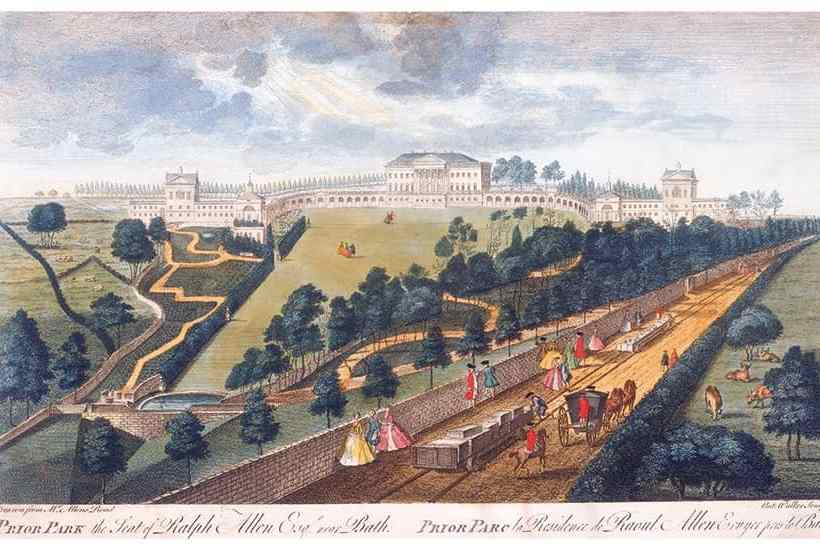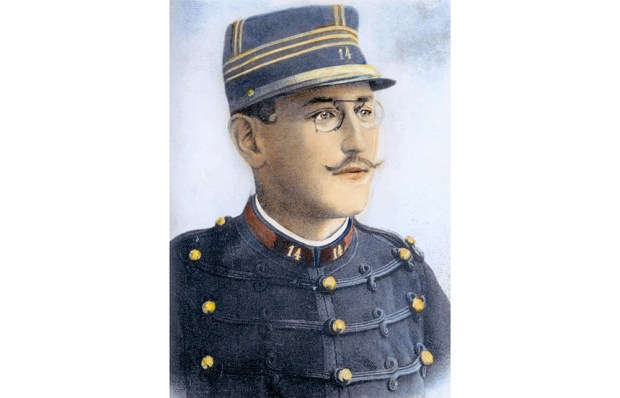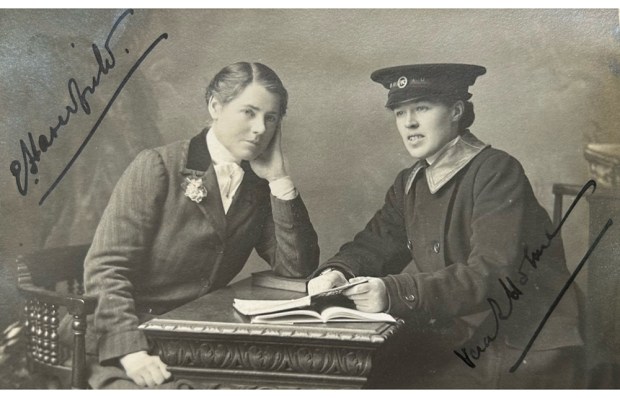‘The two most fascinating subjects in the universe are sex and the 18th century,’ declared the novelist Brigid Brophy when the ban on Fanny Hill was lifted in 1963. Penelope Corfield’s big, handsome, enjoyable book goes a good way to illustrating Brophy’s assertion. Part source book, part interpretive history of the long 18th century (1688-1837), it is also a guide and gazetteer to the continuing presence of Georgian England in our towns and minds.
The world before 1688 is largely unfamiliar to us. The 18th century, however, with its lovable rogues, its introduction of constitutional monarchy, its rights of man and its sexual libertines, is akin to ours. Despite recent trends suggesting we may soon be dressing the piano legs again, we are closer to the Georgians than to the Victorians.
Corfield’s grasp and authority are evident throughout. Despite making occasional reference to modern intellectual heavyweights such as Gramsci or Habermas, she maintains a lightness of phrase that makes her book never less than enthralling, even in the midst of a long list of Georgian achievements. For it is the deeds rather than the misdeeds by which Corfield is most taken. While she never shies from the horrors of slavery, for example, her interest is in those who helped abolish it. The subtitle feels like a sop to current academic fashion.
So what did the Georgians ever do for us? Well, they united the four home nations (George III was probably the first king to ‘glory in the name of Briton’, which did not stop Squire Weston in Fielding’s Tom Jones referring to ‘Hanover rats’). The Union Flag took its final form in 1801, when St Patrick’s cross was added. There is hardly an area of Georgian life that does not find echoes or evolution in our own times. Cosfield lists enduring deeds of science and technology, social organisation, commerce (with an emphasis on women’s significant contribution), literature (Jane Austen is a constant point of reference) and, most evidently, architecture. When we think about our most aesthetically celebrated towns and cities, we think of Georgian terraces — of Edinburgh New Town, Bath, Dublin and Islington. Nowadays it is not merely grandees who stroll around the rooms of sumptuous Whig palaces such as Castle Howard, Chatsworth, Blenheim and Petworth. Even as they were raised, the Georgians were promoting meritocracy and reason above blood and superstition. People from different classes started wearing similar clothes.
The author describes her own cultural roots as being in ‘secularised Quakerism’, which is fairly scary at first thought, but is in fact reassuring, suggesting a reasonable, quiet zeal, appropriate to her subject: ‘Thomas Paine’s The Age of Reason (1794) was a deistic tract, challenging belief in all forms of religion based upon divine revelation.’ Western Europe was experiencing the Enlightenment. Corfield points out that it wasn’t merely a metaphorical term: oil-fired lamps became common, and by the end of the 18th century gas lamps were being pioneered. Towns and cities were being enlightened. New glass windows helped.
The British went into the world, and the world came to London. It became —as it remains — the most cosmopolitan city on Earth. Corfield dislikes the modish phrase ‘the colonial project’. The empire was, in her view, made haphazardly. Explorers were ‘followed more routinely by traders, farmers, town settlers, missionaries, indentured servants, and (later) transported convicts’. The important imperial factor was the degree of state support for these pioneers, especially in the way of protection, most fundamentally in the Navigation Acts, which more or less gave Britain rule of the seas.
Which brings us to slavery. Corfield tells us: ‘Collectively, all abolitionists agreed that enslavement contradicted the enlightened “temper of the times”.’ Pro-slavers had to work behind the scenes. Abolitionists formed groups and clubs, and fomented movements such as the Anti-Saccharine Society. Corfield emphasises women’s contribution to this politicking.
In one of the particular features of the book, the ‘time shift’ paragraphs that conclude each chapter, Corfield demonstrates the extent of global migration by listing some of the foreign flora introduced to Britain by Georgian botanists, and now considered native. For example, the oldest wisteria in the country (from China) was planted as a cutting in 1816 and still flourishes at Fuller’s Brewery in Chiswick. A little further up the Thames, at Twickenham, Alexander Pope planted the first weeping willow.
The Georgians left Britain literate, meritocratic, legislatively mature, industrially powerful, confident and ready to dominate the world for the next century. It was a country marked by a degree of tolerance, curiosity, and vivacity not perhaps matched until the 1960s. There were plenty of warts — you could be hanged for impersonating a Chelsea Pensioner or damaging Westminster Bridge — and Corfield includes them in what is not far off a celebration. The Georgians will take its place next to M. Dorothy George’s long-enduring London Life in the Eighteenth Century. It is a fascinating book.
Got something to add? Join the discussion and comment below.
Get 10 issues for just $10
Subscribe to The Spectator Australia today for the next 10 magazine issues, plus full online access, for just $10.
You might disagree with half of it, but you’ll enjoy reading all of it. Try your first month for free, then just $2 a week for the remainder of your first year.














Comments
Don't miss out
Join the conversation with other Spectator Australia readers. Subscribe to leave a comment.
SUBSCRIBEAlready a subscriber? Log in